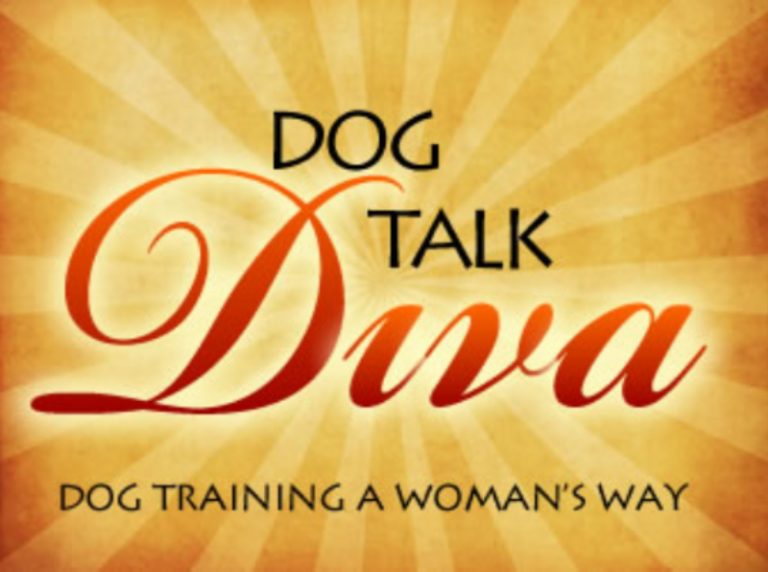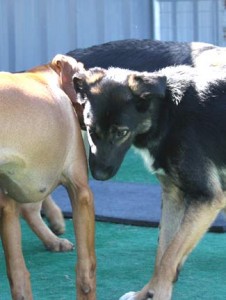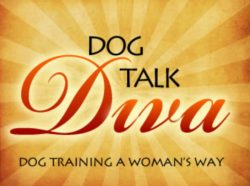Unless you’ve been under a rock for the last 20 years, you know the dog training world is deeply divided on training philosophy and methodology. I’ve been thinking a lot about this schism over the past couple of weeks, and I HAVE FOUND THE HEADWATERS! If I’m not mistaken, the entire rift can be traced back to one, critical source: the myth of aggression based dominance.
When an assumption is made or an assertion stated that sounds logical, often no one bothers to check facts. If it’s easy to believe, it is. And the longer that assumption is out there unchallenged, the deeper it is woven into the fabric of popular belief and truth.
Such is the case with the myth that dominance in the animal world is achieved through aggression. The assumption that rank has been won through bloody battles, pain and anguish – the alpha male dominating brutally over his challengers – is at the root of the dog trainers’ Great Divide.
One school of dog training thought is firmly rooted in the belief that dominance, subordination and rank in general are established through this type of confrontation and aggression. Because confrontation and aggression with a dog can produce negative, sometimes dangerous results, all forms of correction and the entire notion of outranking a dog are avoided. Those trainers that ascribe to this philosophy entrench themselves in the positive-reinforcement-only camp, opting to teach only new and alternative behaviors. On the other side, trainers that believe this premise to be untrue, stand their ground in the “balanced training” camp. They use positive reinforcement to teach new behaviors and correction to stop unwanted ones.
What a shame that so much divisiveness has stemmed from an erroneous assumption! And how confusing for the poor, unsuspecting dog owner that wades innocently into the swirling waters of dog training philosophy! One trainer says one thing, another contradicts; one book advocates one style and demonizes another. The next book says just the opposite. The poor dog owner! They’re afraid to do anything and the dog suffers in the wake of their confusion.
Let’s set the record straight. Dominance, subordination and rank in the world of social group mammals are NOT routinely determined through the use of force or aggression! All this to-do and argument over a myth! It’s really a shame, and our dogs, ultimately, are the losers. Read on.
Rank is determined one way and one way only: the ability to stop another from doing something. If you can do that, you have rank and status. You own resources. You get your own way. You tell everybody else what to do. That sounds like rank and control to me. I don’t see any blood. I’ve watched this social scene play out for over 50 years, with cows, horses, dogs…even humans. Curiously, the ones that rise to the top of their social group – be they cow, horse, dog or human – are strong, quiet, focused individuals, not blustering bullies.
Let’s take dogs in particular. Except in rare instances, when an alpha dog stops another dog from doing something he doesn’t like, he does it with symbolic gestures and actions that only hint at his greater physical power or ability, yet to be called upon. Nature seeks harmony, not confrontation! A dominant dog will stand on his tippy-toes to appear taller, in order to convince the subordinant to back off instead of fighting. He might body-bump into another dog to show that he is bigger and weighs more to hint that he would win a confrontation – in order to avoid one. He will bark and show his teeth, again to hint at his power, and to avoid escalation into a bite fest. Even when the alpha dog nips another dog, it is conversational, not confrontational. The alpha is saying, “I’m warning you to stop that. Don’t make me use all of my teeth – see how big they are?” The subordinate dog agrees, gives up whatever he was doing, and harmony is restored.
In the dog world, correction is not angry, vindictive or confrontational. It is pragmatic. It is a means of stopping a behavior and achieving rank without fighting. In dog training, corrections given without anger can do the same. Dogs understand and accept correction; what they take offense to is anger. The two are very different, and the key is understanding that difference.
I’m on a mission to break down the myth of aggression-based dominance, mend the rift between my fellow dog trainers and help bring every dog owner under a common philosophical tent. Dogs need leaders not cookies, and boundaries not punishment. When we can agree that rank, status and leadership involve control not confrontation, we’ll be on the right track.
-Diva











5 Responses
I was pleased to read your article, as I am always struggling with the conflicts of training methods that are written by professional animal trainers. I was curious what your reference to “Dogs need leaders not cookies” means exactly. Do you reward with cookies when teaching new behaviors but then transcend to corrections when the dog chooses not to follow the command and you know they have learned what is expected?
I enjoy your articles, I hope you continue to share your knowledge.
Hi, Shelly:
I’m glad you enjoyed the post the Great Dog Training Debate. There is such confusion and angst out there, I felt it needed to be explained and addressed.
On the question of cookies, if one is teaching a new behavior (sit, down, heel, etc), a treat (or any other positive reinforcer) can be very helpful in creating the positive result that a dog will seek to repeat.
The real problem I see is that owners (and trainers) focus too heavily on the teaching of “commands”, and too little on setting boundaries. “Sit” doesn’t make you a leader, and “Stay” doesn’t keep your dog off the counters when he’s not on command.
A dog is looking for boundaries, and a leader to set them. Effective boundaries are not established through confrontation or aggression; they are set quietly, consistently and purposefully – as they are in Nature. As long as boundaries and corrections are assumed to be confrontational or aggressive – they will be avoided by trainers and owners alike, and the dog is left adrift to make his own behavioral decisions – usually the wrong ones!
Thanks for following DogTalkDiva!
-Diva
As a rescue volunteer, I see a lot of dogs in need of structure and boundaries. They’ve never had to live by any rules or had anyone to care enough to try to keep them safe. I am profoundly frustrated by the “all positive” training phenomena of rewarding good and ignoring bad behavior. The methods – while they are effective over months or years of use, are not practical for use in a fostering situation. While we are concerned with finding the right home for the dog and helping a dog achieve an acceptable level of behavior; we don’t have months or years to accomplish this. Our goal is to see a dog settled into a loving home as soon as possible. All positive techniques are just not practical in this application.
Also, many clicker trainers claim the dog isn’t working for food; however in every video I’ve watched, that’s exactly what the dog is doing. I want a dog to work for me and our relationship as I’m working for him and not for food.
The biggest complaint I have with all positive pros is that they will never in any case ever take on an aggressive case. Never once have I seen one of these trainers ever offer any assistance to a dog owner of an aggressive dog – other than to tell the owner to call another trainer, subject the dog to medication (which never works) or to call rescue. Rescue is the LAST place an aggressive dog should go.
Dominance theory (hate that term) training isn’t aggressive and it isn’t cruel – it’s built on a mutual respect between owner and dog that a clear set of expectations have been set forward with a tangible reaction to certain behaviors. There is no pain or fear involved.
Rachael:
Brava! I could not have said it better myself. Bringing a dog into control and calming his fears and frustrations is ALL about heirarchy and boundaries. It’s about who makes the rules and who follows them. It’s NEVER about pain or fear. Nature doesn’t work that way, and good trainers don’t either. On THAT point, every trainer can agree!
I really appreciate your input. Spoken from the front lines of the real world.
-Diva
This article is so on target for me right now. We have a five month old Brittany male. The week we got him we started with a trainer that uses strictly “respect” based training. We had six 90 minute lessons. The puppy practically fell asleep after 45 minutes because I think his little brain was just thinking so hard. On the second and third lesson the puppy was shaking in the presence of the trainer. I pointed this out to the trainer who said “Have I done anything to make him afraid?” and I admitted he hadn’t. The puppy continued to clearly be at least somewhat afraid in the presence of the trainer, however he learned very quickly to wait at the front door and not to pull on the leash. He would do a stay for over 20 minutes when he was less than four months old. However, we live on a quiet street, but there were a couple of instances where he ran across the street (once through the garage door). The trainer set up the dog to be off leash with the garage door open and then had his partner entice the dog outside while my husband said to stay. He instructed my husband to throw a chain at the dog if he left the garage. He missed with the chain and the trainer ran at the dog and the dog ran for our front door. He said that our puppy is defiant He said we may have to use the shock collar on the dog. I have been unsure as to whether we should be continuing with this trainer. We tried an AKC Club at the Novice I level last weekand they were using treats to teach heel. Our puppy seems to go wild when we try to teach heel with treats but responded well to verbal praise when I tried practicing heeling at home. What do you think? I am unsure whether to return to the private trainer or to continue with the Novice I class.
Thanks so much for any advice you can offer. I love your articles and wish we could do classes at your facility.
Terry